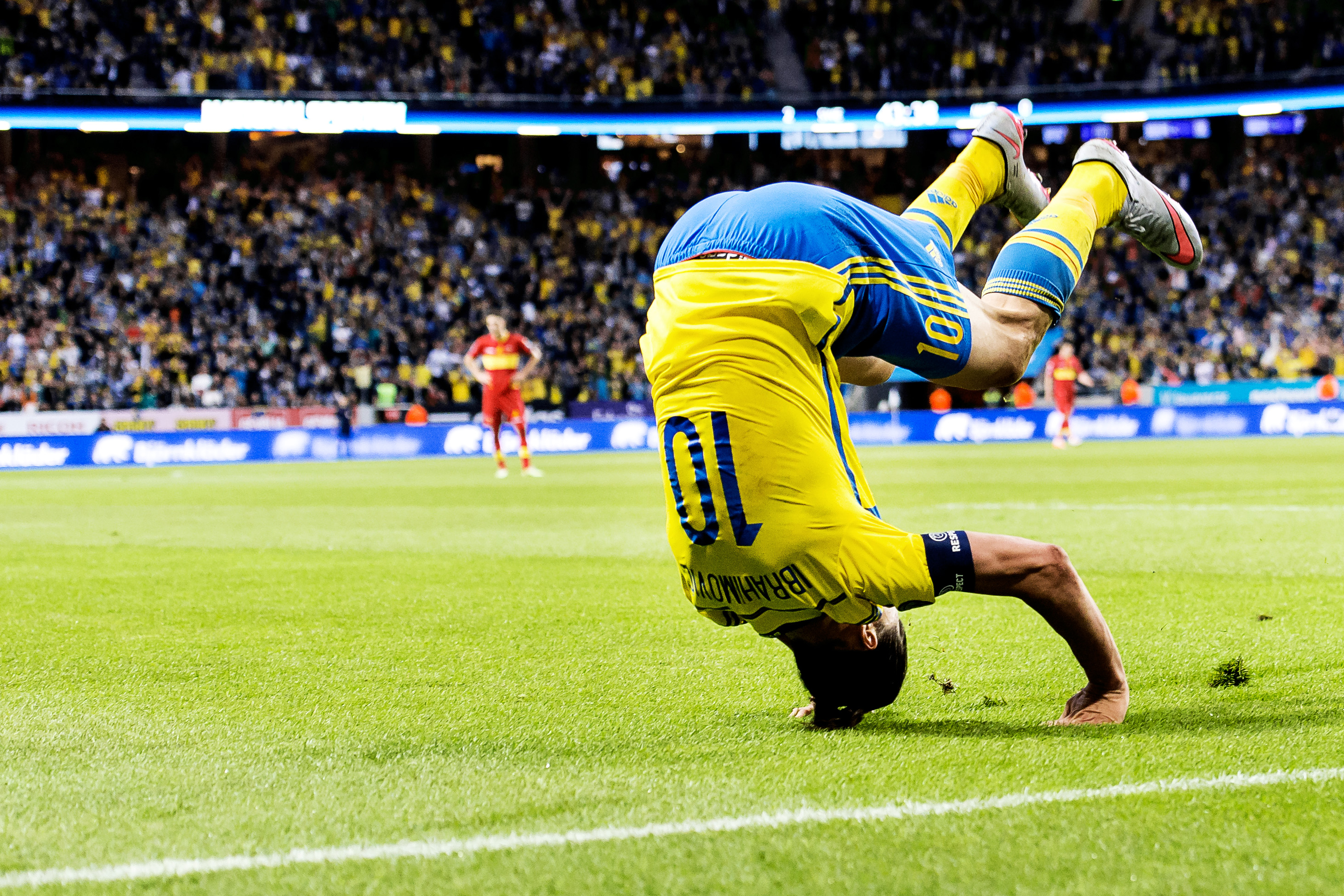2017 was a really bad year from so many perspectives.
Global politics was in flames. New conflicts surfaced and gasoline was pured on some old ones.
Heroes left us, like Tom Petty and Malcolm Young.
On a personal level there were several disasters that made life heavier than normal.
So what defined this crappy year? Probably…The Dab. It was everywhere and it was a move as rediculous as the entire year.

Dabbing, or the dab, is a simple dance move in which a person drops the head into the bent crook of a slanted arm, often while raising the opposite arm in a parallel direction but out straight. Yeah? So whuäy did everybody havevto do it? Everywhere?

Jesse Lingard properly brought the ‘dab’ dance craze to the British public consciousness when he scored in Manchester Uniteds 3-3 draw with Newcastle last January.

He’s certainly not the first sports star to celebrate with the dance move, as his now-teammate Paul Pogba had already popularised the dab in Serie A with Juventus. Even newspapers started ask what is going on?

Perhaps unsurprisingly the dab is an import from the United States, where it first emerged in their professional sports in the autumn having originated on the hip hop music scene.
Now children everywhere are dabbing – including Cristiano Ronaldo’s son, as he congratulated his dad on winning a fourth career Ballon d’Or award ss the best soccer plsyer in the world 2017.

But The Dab madness went way beyond sports. We saw filmstars, police officers, firemen, nurses and even politicians – like the always cool Canadian PM Justin Trudeau – dabbing everywhere.

In the history of oscillating limbs, “the dab” has ascended to prominence like no other. Starting out as a movement embedded in Atlanta’s rap scene, in the last year or so the dance move has become one of the great cultural ticks of our time. Like Snapchat, hoverboards, outrage, and the ability to bone, eat, and order a ride through the mobile phone, “the dab” is one of this generation’s defining features.

However as all trends grow and come to pass, the moment has come for the dance move to be laid to rest, cremated in a funeral pyre, and left to fester in the backpages of time.
Let’s agree thst 2018 can do better than The Dab. We can do better. So bye bye dabbing. Welcome a new move for the future!
In 1999, Bill Gates wrote a book titled “Business @ the Speed of Thought.”
In it, Gates made 14 bold predictions that at the time might have sounded outrageous.

Now we know that Gates’ forecasts turned out to be eerily prescient.
For those of you that don’t remember what is what like in 1999, it might be interedting to know that Ibternet barely existed and the mobile phones were rather phones (only phones) that with force and strenght could be moved.

Here are the 14 predictions Gates made nearly 20 years ago — and how close they’ve come to being true.
No. 1: Price-comparison sites.
Gates’ prediction: “Automated price comparison services will be developed, allowing people to see prices across multiple websites, making it effortless to find the cheapest product for all industries.”
What we see now: You can easily search for a product on Google or Amazon and get different prices. Sites like NexTag and PriceGrabber are built specifically to compare prices.
No. 2: Mobile devices.
Gates’ prediction: “People will carry around small devices that allow them to constantly stay in touch and do electronic business from wherever they are. They will be able to check the news, see flights they have booked, get information from financial markets, and do just about anything else on these devices.”
What we see now: Smartphones, and now smartwatches, do all of this.
No. 3: Instant payments and financing online, and better healthcare through the web
Gates’ prediction: “People will pay their bills, take care of their finances, and communicate with their doctors over the internet.”
What we see now: Tech hasn’t been able to change healthcare the way Uber changed transportation, but sites like ZocDoc aim to make finding a doctor and scheduling easier. Startups like One Medical and Forward are trying to change what the doctor’s office is like by offering monthly memberships for online and data-driven healthcare.
You can also now borrow money online through sites like Lending Club and easily make payments through sites and apps like PayPal and Venmo.

No. 4: Personal assistants and the internet of things.
Gates’ prediction: “‘Personal companions’ will be developed. They will connect and sync all your devices in a smart way, whether they are at home or in the office, and allow them to exchange data. The device will check your email or notifications, and present the information that you need. When you go to the store, you can tell it what recipes you want to prepare, and it will generate a list of ingredients that you need to pick up. It will inform all the devices that you use of your purchases and schedule, allowing them to automatically adjust to what you’re doing.”
What we see now: Google Now, a smart assistant that runs on mobile devices, is starting to head in this direction. Meanwhile, smart devices like Nest collect data on your daily routines and automatically adjust your house’s temperature.
There’s also a wave of voice-controlled devices, like Amazon’s Echo and the Google Home, that you can ask to read your email to you or guide you through recipes as you cook.
No. 5: Online home-monitoring.
Gates’ prediction: “Constant video feeds of your house will become common, which inform you when somebody visits while you are not home.”
What we see now: Google bought Dropcam, the maker of a home-surveillance camera, for $555 million in 2014. But that was just the beginning — Ring makes a smart doorbell camera that can let you see who is at your door. There are even cameras like the PetCube that let you control a laser so you can play with your pets while you’re away.
No. 6: Social media.
Gates’ prediction: “Private websites for your friends and family will be common, allowing you to chat and plan for events.”
What we see now: Two billion people already use Facebook to see what their friends are doing and plan events. There’s also Snapchat, Instagram, WhatsApp, and Facebook Messenger alongside an explosion of other smaller social networks that more than cover this prediction.
No. 7: Automated promotional offers.
Gates’ prediction: “Software that knows when you’ve booked a trip and uses that information to suggest activities at the local destination. It suggests activities, discounts, offers, and cheaper prices for all the things that you want to take part in.”
What we see now: Travel sites like Expedia and Kayak offer deals based on a user’s past purchase data. Google and Facebook can offer promotional ads based on the user’s location and interests. Airbnb, which lets people stay in homes rather than hotels, started to offer specialized trips at destinations so you can live like a local, too.
No. 8: Live sports discussion sites.
Gates’ prediction: “While watching a sports competition on television, services will allow you to discuss what is going on live, and enter a contest where you vote on who you think will win.”
What we see now: A bunch of social media sites allow this, with Twitter being the clear leader — and even streaming some games. You can also leave comments in real time on sports sites like ESPN.
No. 9: Smart advertising.
Gates’ prediction: “Devices will have smart advertising. They will know your purchasing trends, and will display advertisements that are tailored toward your preferences.”
What we see now: Just look at the ads you see on Facebook or Google — most online advertising services have this feature, where advertisers can target users based on their click history, interests, and purchasing patterns.
No. 10: Links to sites during live TV.
Gates’ prediction: “Television broadcast will include links to relevant websites and content that complement what you are watching.”
What we see now: Almost every commercial these days has a callout asking the viewer to go to a website, follow the business on Twitter, or a scan a QR code to add it on Snapchat. It’s rare to see a broadcast without a website linked at all.
No. 11: Online discussion boards.
Gates’ prediction: “Residents of cities and countries will be able to have internet-based discussions concerning issues that affect them, such as local politics, city planning, or safety.”
What we see now: Most news sites have comment sections where people can have live discussions, and many sites have forums where people can ask and respond to certain questions. Twitter and Facebook played roles in political revolutions in Libya, Egypt, and Tunisia, as well as the Black Lives Matter movement in the US.
No. 12: Interest-based online sites.
Gates’ prediction: “Online communities will not be influenced by your location, but rather, your interest.”
What we see now: All kinds of news sites and online communities focus on single topics. Many news sites have expanded to include separate verticals, offering more in-depth coverage on a given topic. Reddit is a great example of a website that’s divided into subgroups, or “subreddits,” that focus on interests rather than who you know or where you are.
No. 13: Project-management software.
Gates’ prediction: “Project managers looking to put a team together will be able to go online, describe the project, and receive recommendations for available people who would fit their requirements.”
What we see now: Tons of workflow software in the enterprise space is revolutionizing how you recruit, form teams, and assign work to others.
No. 14: Online recruiting.
Gates’ prediction: “Similarly, people looking for work will be able to find employment opportunities online by declaring their interest, needs, and specialized skills.”
What we see now: Sites like LinkedIn allow users to upload résumés and find jobs based on interests and needs, and recruiters can search based on specialized skills.
Maybe it is time to listen to what Bill Gates today say about 2035.
2017 is the safest year in aviation history. So far, not i single death due to aviation thisbyear. Amazing. And with a record breaking number of air travellers (again).

As a globetrotter, having visited 169 countries and travelling more than 250 days a year – ot is great to see aviation security being excelled year to year.






You must be logged in to post a comment.